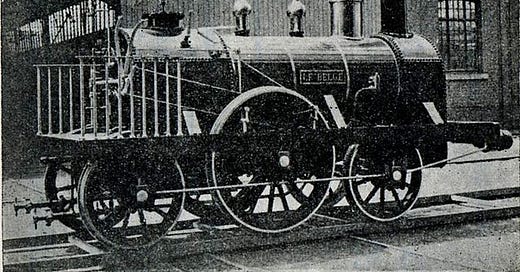Last week, I wrote an article on how to answer questions one and three of the second English Language paper.
This week, I’m covering how to answer Q2. I’m covering the questions in the order that I would recommend answering them and to recap my suggested order is:
Q1
Q3
Q2
Q4
Q5
This is because you only have to read Source A to answer questions one and three, whereas you have to read and compare both sources for questions two and four.
Again, here’s the insert and the question paper. I’m using the latest June 2023 paper.
Q2
Use details from both sources to write a summary of what you understand about the differences between the two trains.
Guidance
Read the question before you read source B so you know what to focus on, which for this question would be descriptions of the two trains.
Highlight the quotes you intend to include from both sources, keeping to words, phrases and short bits of description which you will embed in your answer.
Ensure you are really focussed on the focus of the question and nothing else. Here you need to be a trainspotter, fixated on the trains and the trains alone.
Focus also on the differences and not the similarities. The two most important words in this task are ‘differences’ and ‘trains’.
Every time you make a distinct comment about one source, identify a similarity or difference (depending on the question) with the other. As you’ll see in my response, almost every time I identify a feature of one train, I contrast it with some description of the other, using discourse markers such as ‘in contrast’ to signal I’m highlight a difference between the trains. The question is essentially testing your ability to identify, copy and synthesise relevant points of comparison.
Try to highlight 4 distinct differences but also avoid spending more than 15 minutes on the question.
Response
In source A, Fleming describes how the train has a 'dining car' where he goes to eat.
From this we can infer right away that this is a modern train and a luxury service, despite the author finding the food unpalatable with the bread tasting like ‘peat’.
In contrast, in source B, the train is presumably an early model of a steam train as it is described as being very simple. It has just one 'open carriage' and 'six benches'.
From these descriptions we can infer that this is not a commercial train and perhaps even a prototype, especially as Kemble describes riding the train as a novel and wonderful experience.
This is in stark contrast to the way Fleming describes his experience on the 'Trans-Siberian Luxury Express' which despite the apparent luxury alluded to in the name, he finds very uncomfortable.
Yet, it is clearly more technologically advanced and luxurious in comparison to the simple train Kemble rides, because it has many carriages and is designed for long distance travel.
It is because he has been on the train for such a long time, for days, that he has become bored and describes his life on the train as a 'monk's existence.'
In contrast, Kemble's train is not designed for long distance travel with its 'open carriage' suggesting there is no roof; and she only has a short trip.
It must also be considerably slower because 'at its utmost speed', it can only travel '35 miles an hour' and while Kemble feels this is fast, it is much slower than Fleming’s cross-country train.
Additionally, while Kemble's train has just the one carriage, Fleming's train has more than a dozen so it can carry many more passengers than the the 'party of sixteen' on Kemble's small train.
It also only has 'six benches', so not a lot of room for many seated passengers and not even individual seats, suggesting far less comfort than the 'Trans-Siberian Luxury Express'.
There are also modern facilities which would make long distance travel a lot more comfortable such as the 'sleeping cars' where passengers can sleep and rest.
Give this post a thumbs up if you found it helpful and would like to see the solutions to the rest of this paper.
If you would like further support, I’m a GCSE English tutor and can provide tailored tuition to meet your goals. Simply reply to this email letting me know how I can help.
Best,
Morgan





Do you by any chance have a YouTube channel?
Thank you for this. I’m a home education parent, my son is a gcse student so I’m finding these helpful.